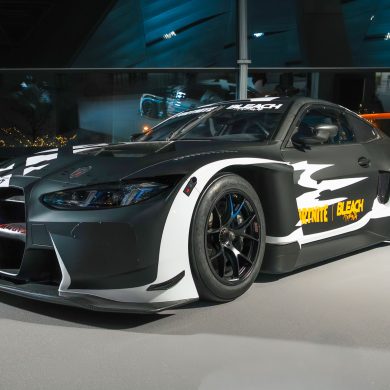The Maserati 5000 GT made its debut to great fanfare at the Turin Motor Show in 1959. With its fuel-injected, four-cam V-8 engine derived from the 450S sports racing car, the “Car of Kings” was the fastest road-going automobile of its day. Only 34 cars of this model were built at Maserati’s Viale Ciro Menotti plant in Modena, with bodywork added by Italy’s top coachbuilders of the period.
Reza Pahlavi, the then Shah of Persia, and a great enthusiast of high-performance sports cars, test-drove a 3500 GT towards the end of 1958 and was delighted with it. However, he requested an increase in performance, and Giulio Alfieri, Maserati technical director at the time, realised that the car would have to be completely redesigned to satisfy his demands.
The resulting AM103 project, continued through during 1959, and was in effect a new car and not merely a customisation: the heart of the design was the V8 engine of the 450S (the famous Maserati racing barchetta), with its bore increased to upgrade its displacement to almost five litres. The 5000 GT, a 2+2 coupe, was born.
The car, of which the first bodywork was built by Carrozzeria Touring, was launched at the 1959 Turin Motor Show, and received the nickname “Shah of Persia” in honour of this unique customer. Only three of that special version were ever produced.
The next year, in 1960, the 5000 GT was exhibited on the stand at the Geneva International Motor Show, with a few revisions to the engine. The most interesting fact of the Maserati 5000 GT was that it was built with bodywork by almost all the leading Italian coachbuilders of the time: from Allemano, Pininfarina, Monterosa, Ghia, Bertone and Frua, not to mention Michelotti for Vignale.
Its success led to the production of a number of cars for customers including Prince Karim Aga Khan with bodywork by Carozzeria Frua, Fiat boss Gianni Agnelli with bodywork by Carozzeria Pinin Farina, industrialist Ferdinando Innocenti with bodywork by Carrozzeria Ghia, film star Stewart Granger with bodywork by Carrozzeria Allemano and Mexican President Adolfo López Mateos with bodywork by Carrozzeria Allemano. Due in large part to its extremely distinctive character and high cost, the total number of cars built between 1960 and 1965 was limited to just 34.
[Source: Maserati SpA; photos: Michael Furman]















Maserati didn’t want its road cars to look like Ferrari’s, so it made them ugly.
I have one from Alemannia, reg. No 0036 First Owner Hollywood Actor Steward Granger
The love of exotic cars must ran in the family. Prince Aly Kahn, the Aga Kahn’s father, bought a beautiful Cadillac Ghia at the Paris Auto Show and presented it to his actress wife Rita Hayworth to try to win her back after one of his numerous affairs. Rita rejected his advances and kept the car. Click on the link below to view an Historic Portrait of the Cadillac Ghia on my Classic Automotive Portraits website.https://www.classicautoportraits.com/portfolio?lightbox=image_5lh
Care to all of them? https://tinyurl.com/Maserati-GT5000